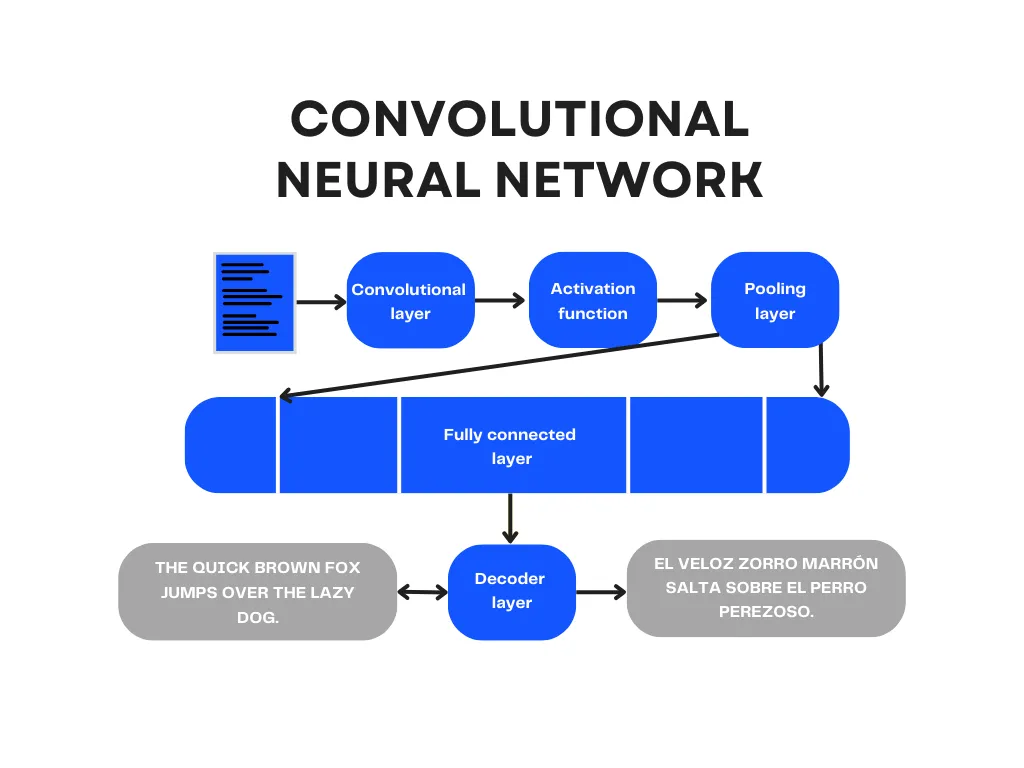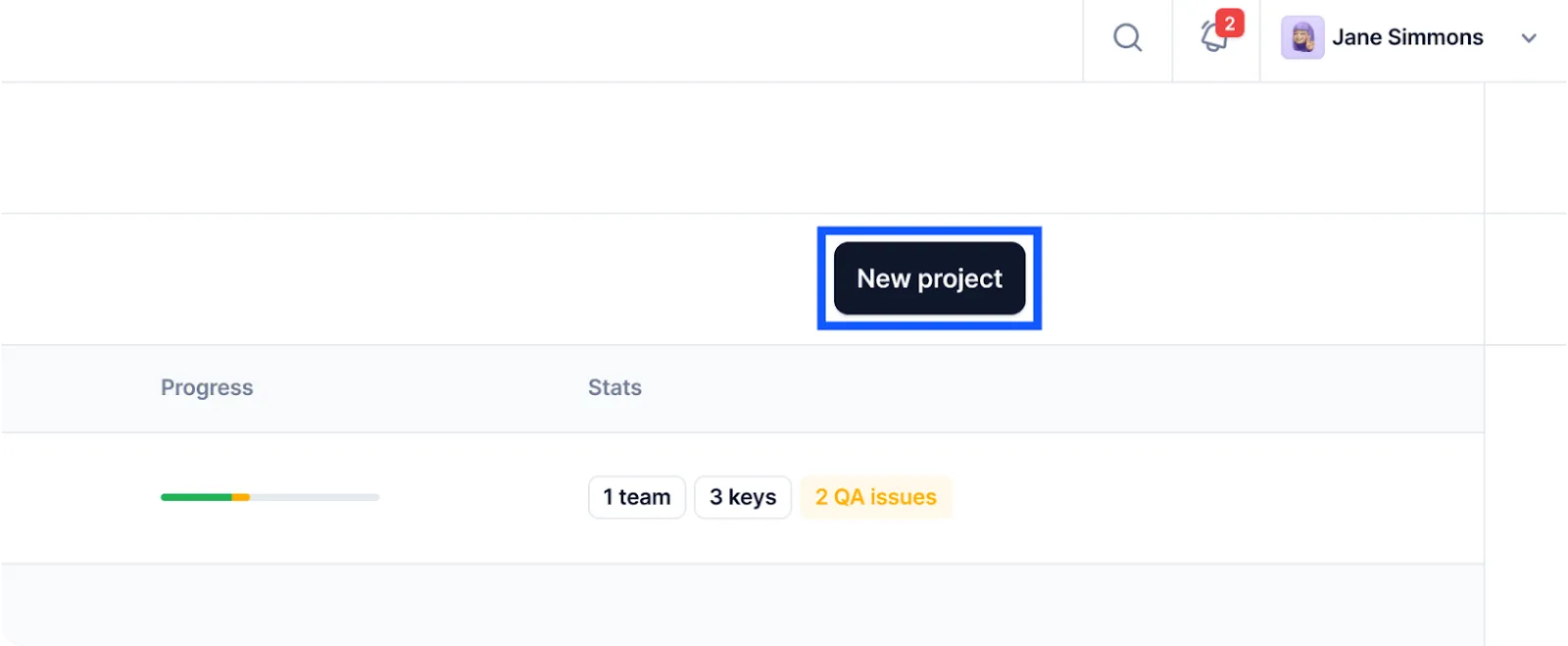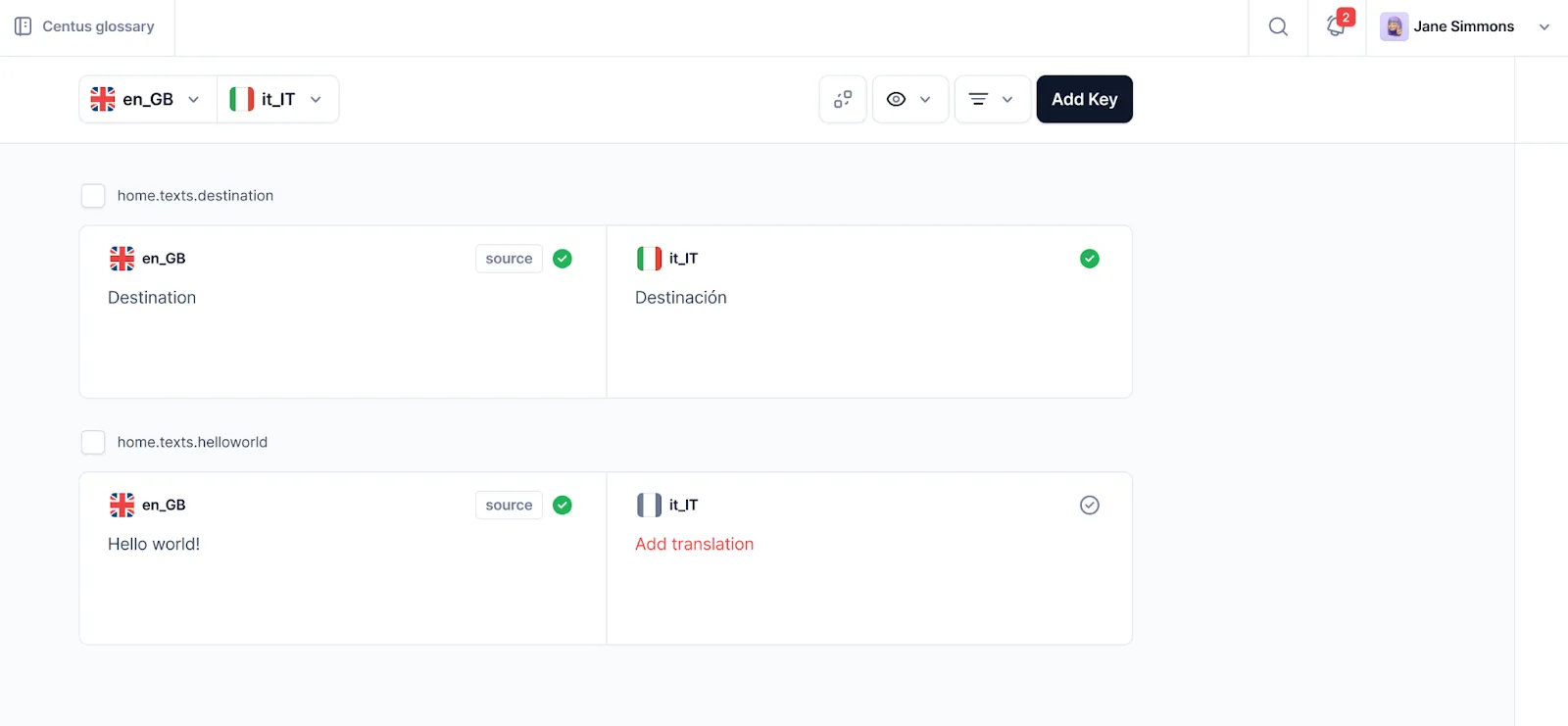It’s no secret that DeepL has been beating Google Translate handily. For years. Across many language pairs.
But just how accurate is DeepL?
That’s exactly what we aim to explore with our study of DeepL’s accuracy. Stick around to find out what sets DeepL apart from other machine translation engines and why it’s a go-to tool for many.
Pro tip: Streamline your translation processes, optimize collaboration, and ship products faster with a localization management platform—Centus. Learn more.
How does DeepL work?
DeepL uses deep convolutional neural networks (CNNs) that learn from bilingual sentence pairs to generate accurate translations. Although CNNs are usually used for image processing, DeepL has adapted them for discovering connections between words and their translations.
A typical CNN consists of five layers:
- Convolutional layer scans word sequences to discover patterns
- Activation function maps the data input to its output to decide whether to fire a neuron
- Pooling layer selects maximum values from a group of discovered patterns
- Fully connected layer connects neurons across layers to discover connections between patterns
- Decoder layer generates translations

DeepL’s model has been trained on the bilingual corpora compiled by Linguee. However, it’s not the only training data used by DeepL.
To refine its accuracy, DeepL has developed crawlers that scour the web for new translations. Upon assessing the accuracy of newly discovered translations, they are added to the training data.
How accurate is Deepl translator?
DeepL is an extremely accurate machine translation engine. A 2020 study on the accuracy of DeepL places it at 89 percent. Another study conducted by the Globalization and Localization Association (GALA) reveals that DeepL is more accurate than its closest rival in almost all linguistic categories.
The table below shows DeepL’s accuracy rates across six linguistic categories:
| Category | DeepL | |
|---|---|---|
| Ambiguity | 64.5% | 74.4% |
| False friends | 69.4% | 83.3% |
| Verb valency | 57.4% | 91.5% |
| Non-verbal agreement | 90.2% | 92.7% |
| Subordination | 74.7% | 72.5% |
| Verb tense/aspect/mood | 69.0% | 71.6% |
Source: GALA
As you can see, in all linguistic categories except subordination, DeepL outperforms Google Translate by multiple percentage points.
DeepL vs. human translation
DeepL’s translations are neither as naturally sounding nor as accurate as human translations. Like other machine translation engines, DeepL cannot accurately reflect intertextual references, degrees of politeness, or cultural knowledge.
Given DeepL’s relative inaccuracy compared to human translation, it should be used with a critical mindset and a healthy dose of MT post-editing.
Is DeepL more accurate than Google Translate?
Yes, DeepL is more accurate than Google Translate. A study comparing the accuracy of the two MT engines shows that DeepL beats Google Translate handily in all but one linguistic category. Notably, the performance gap reaches a whopping 34.1 percent in the verb valency category.
The results of another study are summarized in the table below. Here you can see how accurately DeepL handles idiom translation:
| Category | DeepL | |
|---|---|---|
| Continuous form | 86% | 94% |
| Discontinuous form | 71% | 81% |
| Combined form | 79% | 88% |
| Global results | 70% | 78% |
Source: Hidalgo-Ternero
Once again, DeepL’s translation performance surpasses that of Google Translate. On average, DeepL is 8 percent more accurate than Google Translate.
For what it’s worth, DeepL’s self-reported accuracy rates also surpass the competition.
Note, however, that DeepL doesn’t perform well under the condition of lexical ambiguity. The example below shows that Google fares much better when translating nouns with ambiguous meanings.

Source: GALA
On the contrary, DeepL outperforms Google Translate when it comes to collocations. As you can see in the example below, Google Translate mistranslates the German collocation “den Tisch decken.”

Source: GALA
How to improve DeepL translation accuracy
As was shown above, DeepL is insanely accurate, yet it’s not a match for its human counterparts. To maximize DeepL’s accuracy, use human translators. And to organize and streamline their workflow, use a localization management platform, like Centus.
Using Centus, you can translate software, apps, websites—you name it. Here’s the drill:
- Sign up to Centus and create a new project

- Enter project details and select the base language
- In the Imports section, add your files for translation. Centus supports dozens of popular file formats, so you don’t have to worry about file conversion.

- In the Editor, batch-translate your files using DeepL

Now add your team members to the project.
Translators, editors, managers, developers, and designers can review translations, edit them, and share feedback in one place. If you have a large localization project, all of them can work on multiple language versions simultaneously.

What’s more, you can integrate Centus with your team’s tools such as Figma to create your custom workflows.
Intrigued? Try Centus now to see how it can maximize the quality of your translations!
When should you use DeepL?
Although DeepL is a powerful tool, it might not be the best option for all translations. Let’s go over the situations where you should consider using DeepL:
Professional translations
DeepL is a great option when you need translations that are accurate while preserving the nuances, tone, and style of the source content. It is helpful in areas where accuracy and context are crucial, such as marketing, medical, or legal information.
DeepL's advanced algorithms are remarkably accurate at handling industry-specific terms and technical jargon.
High-quality content
DeepL can effectively translate text at a quality level that might be better than other machine translation techniques. These translations can be used in publications, websites, or government documents.
It is appropriate for situations where maintaining the integrity of the content is crucial since it can generate translations that are both coherent and contextually accurate.
Large-scale projects
DeepL performs well when handling large volumes of text. It can expedite the translation process without sacrificing quality. Its stability and reliability are priceless in these types of situations.
Multi-language translations
DeepL is an easy-to-use solution when you need translations in numerous languages at the same time. Due to its multilingual capability, it can translate text effectively between several markets, which is beneficial for international businesses.
Parting thoughts
DeepL is an extremely accurate tool that surpasses almost all other translation solutions. To further improve its accuracy, use DeepL along with a professional CAT tool.
Still not sure whether DeepL is accurate enough for your project? Read our reviews of the best online translators.
Get the week's best content!
By subscribing, you are agreeing to have your personal information managed in accordance with the terms of Centus Privacy Policy ->
Keep learning

9 min. read
7 Best Machine Translation Software Tools
12 min. read
Translation Workflow Management for Large Projects
4 min. read
What Is Neural Machine Translation and How Does It Work?
15 min. read
ChatGPT for Translation: Your Go-To 2025 Guide
8 min. read